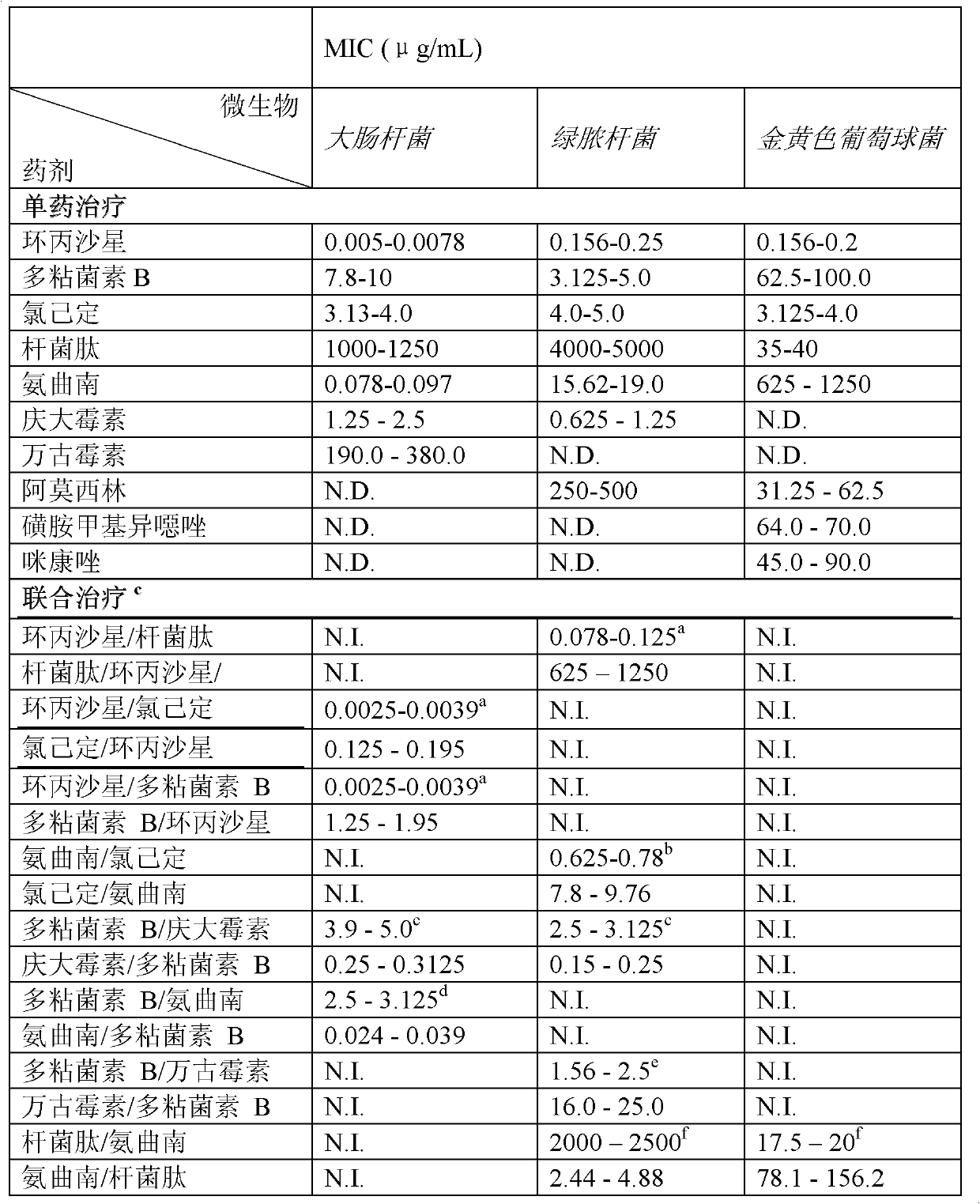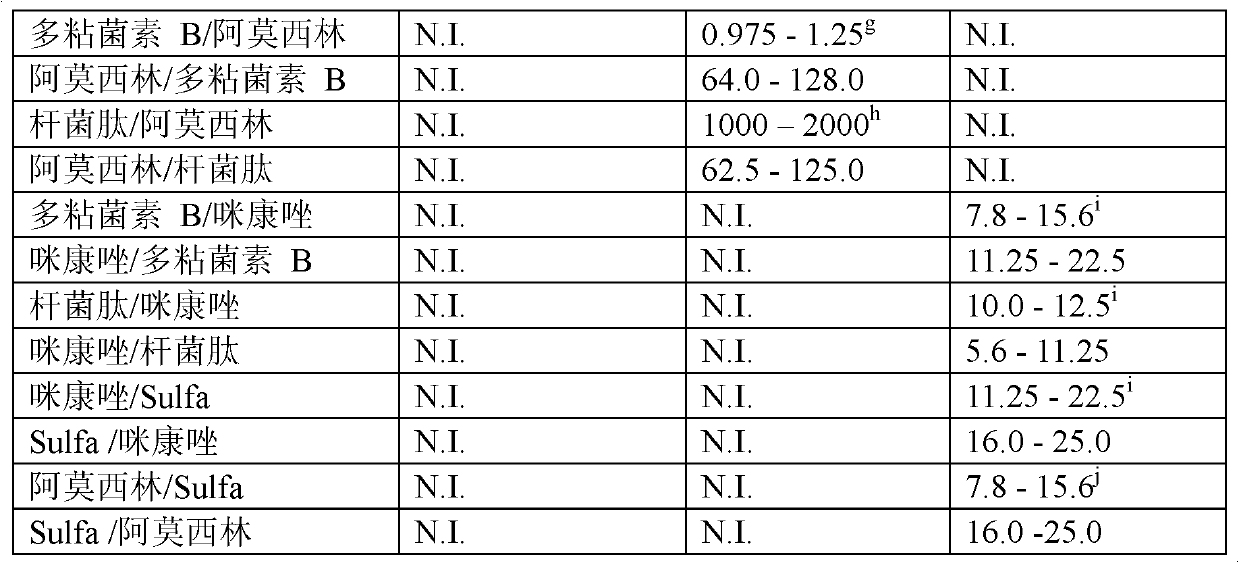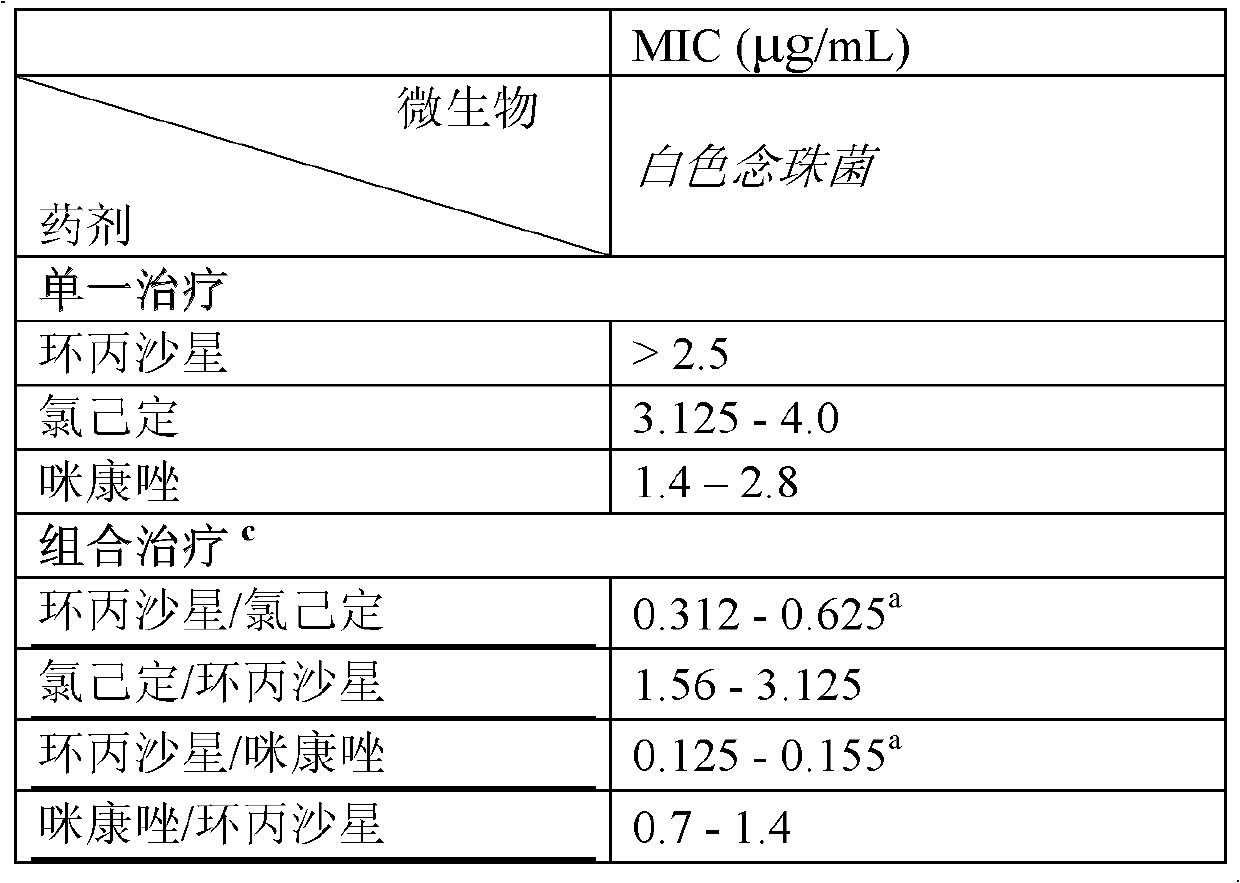Combination therapy for the treatment of bacterial infections
一种组合物、抗真菌的技术,应用在用于生物控制的化学品、抗细菌药、应用等方向,能够解决缺乏有效治疗致病菌、抗可用药物的菌株数目增加等问题
- Summary
- Abstract
- Description
- Claims
- Application Information
AI Technical Summary
Problems solved by technology
Method used
Image
Examples
Embodiment 1
[0112] Embodiment 1: Determination of minimum inhibitory concentration (MIC)
[0113] The broth dilution method is used to quantitatively measure the activity of antimicrobial agents in vitro against a given bacterial isolate. First, a series of tubes / wells are prepared with a broth medium to which different concentrations of antimicrobial agents are added. The tubes / wells are then inoculated with a standardized suspension of the test organism. After overnight incubation at 35±2°C, the assay was performed and the minimum inhibitory concentration (MIC) was determined. Operate under sterile conditions.
[0114] Preserved cultures: Preserved cultures were maintained in MH broth containing 15% glycerol and stored at -80°C. Preserved cultures were subcultured on MH agar (MHA) and incubated overnight at 37°C.
[0115] Preparation of inoculum: A single isolated colony of the same morphological type from an MH agar plate was selected, inoculated into a sterile tube containing 25 m...
Embodiment 2
[0142] Example 2: General Synthesis of Bioactive Monomers Containing Membrane Active Antimicrobials or Fluoroquinolones
[0143] A general synthetic scheme for a bioconjugated agent (eg, a membrane-active antimicrobial (with monomeric units) or a fluoroquinolone (with monomeric units)) is set forth below in Steps A-D and Scheme A.
[0144] Step A:
[0145] To a dry 2 L round bottom flask purged with nitrogen was added ciprofloxacin hydrochloride (100 g, 301.8 mmol), trityl chloride (185.1 g, 663.9 mmol) and chloroform (1000 mL). To this stirred suspension was added triethylamine (135 mL, 965.8 mmol) dropwise, and the resulting mixture was stirred at room temperature for 4 hours, during which time a homogeneous yellow solution was obtained. The resulting solution was treated with methanol (500 mL) and stirred at 50 °C for 1.5 hours. The resulting solution was washed with water (2x 2L). The organic layer was dried over sodium sulfate, filtered, and the solvent was removed und...
Embodiment 3
[0157] Embodiment 3: the synthesis of ciprofloxacin polymer
[0158] To a dry 1 L round bottom flask purged with nitrogen was added polycaprolactone diol (200 g, 100 mmol). The flask was heated to 70°C under vacuum for 2 hours. The temperature was lowered to 65 °C, then DMSO (100 mL), dibutyltin dilaurate (3.2 mL, 5.0 mmol) and THDI (32 mL, 155 mmol) were added. The reaction mixture was stirred at 65 °C for 1 h, then a solution of 4 (38.84 g, 50 mmol) in DMSO (500 mL) and dibutyltin dilaurate (1.8 mL, 3.0 mmol) was added. The reaction was stirred for 17 hours at 65°C under an inert atmosphere. The reaction was quenched with the addition of methanol (78 mL), then kept stirring for an additional 1 hour. The polymer was transferred to a titration funnel where hexane (2 L) was added dropwise. After discarding the supernatant, the polymer was pipetted into isopropanol and hexane (2 L) was added dropwise. This process was repeated with water until precipitation occurred. The r...
PUM
 Login to View More
Login to View More Abstract
Description
Claims
Application Information
 Login to View More
Login to View More - R&D
- Intellectual Property
- Life Sciences
- Materials
- Tech Scout
- Unparalleled Data Quality
- Higher Quality Content
- 60% Fewer Hallucinations
Browse by: Latest US Patents, China's latest patents, Technical Efficacy Thesaurus, Application Domain, Technology Topic, Popular Technical Reports.
© 2025 PatSnap. All rights reserved.Legal|Privacy policy|Modern Slavery Act Transparency Statement|Sitemap|About US| Contact US: help@patsnap.com



